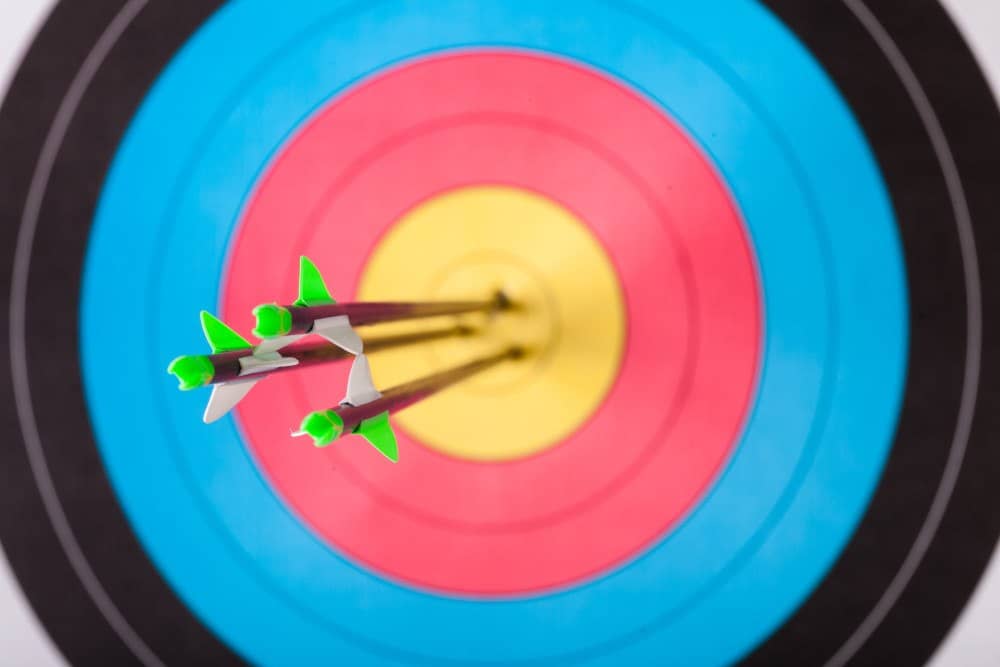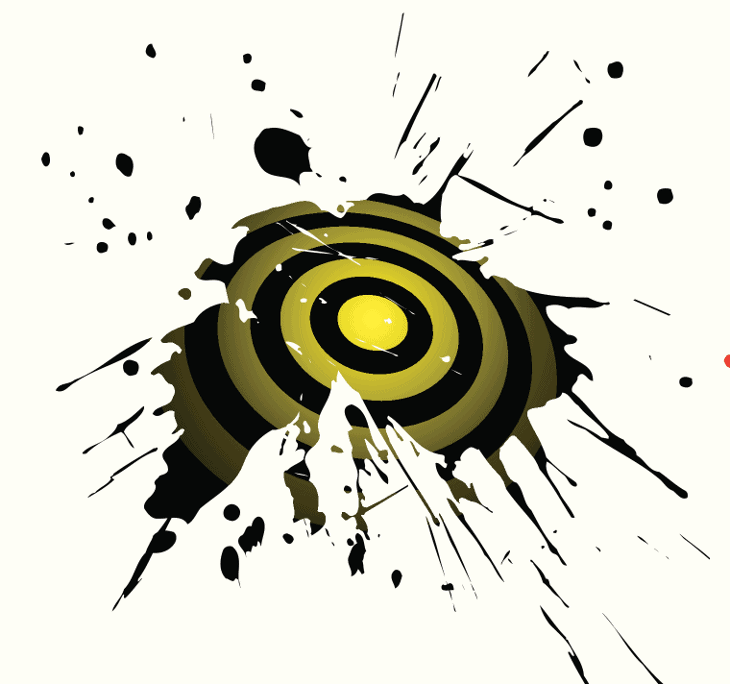This is an important one, and one that gets overlooked:
COMMANDMENT #5: DON’T EVER SHOOT A CRACKED ARROW
If you remember in Commandment #1, we talked about the folly of dry firing: how it does damage to your bow, but also how it’s dangerous, because the parts of the bow can fracture, fly off, and hit you in the face or the eye (or hit someone else).
This Commandment is similar: never shoot a cracked arrow—even if it cost you a pretty penny—because it can shatter, scatter, and embed shards of itself in your eyes or wrist.
To bring this home, let’s take a look at an arrow leaving a bow. It’s a 7-second clip, so don’t worry about being stuck in front of a YouTube video for ten minutes:
Is that fascinating or what?? That’s a slow-motion capture of an arrow leaving the bow, and you can see how dramatically it bends as it leaves the arrow rest.
(Two quick notes before we move on: 1) Arrows do have a substantial bend when they’re shot, but I think most arrows don’t bend as dramatically as the one in that video; I think that arrow may be too light for the heavy bow it was shot from, and that’s the cause of its pronounced bend; and 2) arrows bend and still hit their intended target because of something called The Archer’s Paradox. That’s a fascinating topic, and I’ve written a couple of posts about it if you’d like to learn more).
OK, back to that arrow bending like a snake on its way away from the bow. Why did I include that clip? Because I want you to imagine what might happen if that arrow had a crack in it. That’s right: it would shatter, and go all over the place. That’s absolutely terrifying.
And here’s the thing: all arrows will show wear eventually, either from colliding with other arrows or hard targets. So you need to be on the lookout.

Here’s When You Should Check Your Arrows
There are three main times you should review the structure of your arrows to ensure they’re unblemished:
1. After you shoot an end (aka, a round). When you’re taking your arrows out of the target, give each one a quick check. As you’re first doing this, it may take a while for you to review each arrow, but after a few weeks, you’ll be doing it automatically and doing it quickly.
2. When you’re performing bow maintenance at home. When you’re doing bow maintenance—and perhaps I should make “Do Bow Maintenance” a Commandment!—go over each piece of equipment that you own. Look at your riser, your limbs, your scopes, your plungers, your stabilizers, and—always—your arrows. Look for anything suspect—a crack, a splinter, a stray thread on your bow string… look at everything, and be thorough.
3. When you purchase new arrows. In most peoples’ minds, it’s wear-and-tear that causes equipment breakdown. But—that’s not always the case! Very often, it’s a manufacturing problem that creates the problem in the first place—meaning the first time you use a product, it may be a danger to you. Whenever you get a new archery product, check it to make sure that it’s in tact and not fractured in any way.
There’s one other time in particular when you need to check your arrows, and it’s a little counter-intuitive: when you’re on a roll. Think about it: one of the ways that arrows get damaged is when they collide with other arrows. And when do they collide with other arrows? When you’re grouping them!
That’s right—when you’re on fire, grouping your arrows on the top of a nickel, they’re likely to crash against each other and get dinged up. In moments like that, when you’re grouping your arrows like a champ, you need to pay attention to them. It’s easy to simply collect your arrows and think, “I’ll tell you what—I’m probably the best archer there ever was,” but you need to remind yourself to review them.
How to Check Your Arrows for Damage
Now that you know when to check your arrows—how do you actually give them a review? Here are a few of the ways:
- Give them a visual scan for nicks, cracks, bends, cracks—but also run your fingers up and down the arrow, and feel if there are any chips, dings, etc. If it’s not a 100% perfect, unchipped arrow, it should be removed from your practice.
- Give them a slight bend. If the arrow folds or splinters in any way, get rid of it; if anything cracks or pops or makes any other kind of sound, get rid of it.
- Give the nock a look. This is where the bowstring transfers energy to the arrow, so it’s not uncommon for a nock to become damaged—after all, it goes through a lot of wear and tear. A damaged nock may result in a dry fire, or even worse, and errant arrow that goes someplace it’s not supposed to go. Review your nocks!
- Give the arrowhead a look. There are plenty of screw-in arrowheads, and while you’re shooting, it’s very common for an arrowhead to become loose. If it becomes fully loose in your quiver and you draw an arrow without an arrowhead, the weight of the arrow is going to be dramatically different than what you’ve been shooting. That could result in damage to the bow or to your person, so be aware.
If you’d like some more guidance about reviewing arrows, you can visit the Easton Archery “Warnings About Usage” page.
The Best Way to Be Safe With Arrows Is to Buy Them Correctly
Buying arrows can be tricky, and I’ve written entire posts about it. What you want to find are arrows that have the correct spine and weight for your bow. Arrows that are too heavy may tire your bow string, and (as I mentioned in the “Don’t Dry Fire” Commandment) arrows that are too light may result in a kind of “hidden” dry fire and do damage to your bow. And, any arrow that’s not suited to the bow you’re using is more likely to become damaged.
Arrow manufacturers have arrow selection charts that will tell you the spine and weight you’re looking for. It may take a while—those arrow selection charts may seem a little daunting if you’re new to archery—but give it a few minutes and you’ll have it all figured out. And, as always, if you’re confused, head to the pros: go to your range and ask a staff member or someone who you know has studied archery for a while.
That’s a Good Start
That’s a pretty decent introduction to keeping an eye on your arrows. Remember, no matter how much the arrow cost, no matter how “lucky” the arrow is, no matter anything—a damaged arrow must be removed from your practice. Don’t use it.




